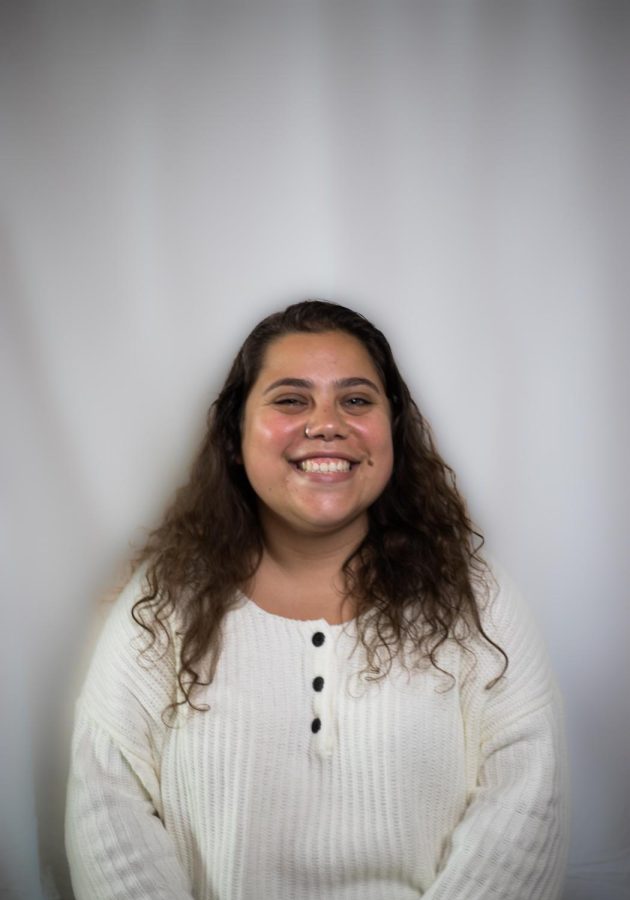OPINION: Metal detectors profile students, not protect students
December 4, 2019
There’s only one entrance to Frank McCourt High School. There are several other doors that exit to the street, but students can only enter the building from one side. In the lobby, before you walk up the staircase to your first class, students have to swipe their student IDs and place their backpacks on the conveyor belt. Students then walk through the metal detectors while security guards look at the scanned images of bags to check for any materials that aren’t allowed in schools.
Frank McCourt High School is located on the Louis D. Brandeis campus and is one of five schools located in the building. The four other schools, Innovation Diploma Plus, Urban Assembly School for Green Careers, Global Learning Collaborative and Success Academy are the only schools in the area that have metal detectors. Students have had numerous issues with the system including not being able to bring their phones into school, getting to class late and objects that are mistaken for materials not allowed in the building.
Prior to the five schools opening, Brandeis was its own individual school that was closed in 2012. The metal detectors were installed a couple of years prior and have been there since Brandeis was closed.
Because of the metal detectors students never worried about a school shooter. Though there were other problems with the system, there was never a fear of a person walking into the school with an assault rifle. But that isn’t the feeling for students across the country.
In 2012, 20-year-old Adam Lanza walked into Sandy Hook Elementary School and killed 26 people- 20 kids and six staff members. After the shooting at Sandy Hook happened, politicians and parents of Sandy Hook students called for gun reform policy change. Surely this would lead to politicians changing background checks and bump stock regulations. Since then there have been 290 school shootings, according to a Time article from 2018. The number of school shootings is numbing. There was a time where each shooting lasted longer in a news cycle for more than 24 hours, but now some don’t even break national attention.
Active school shooter drills can start as early as elementary school. By the time students are in high school, they are as normal and frequent as a fire drill. There was a constant awareness of school shootings and the different types of active shooter drills. Students’ main focus in school should be their school work, but instead there’s a constant fear of “what do I do if there is an active shooter?”
By the 2014-15 school year, New York City implemented a new set of guidelines that shooting drills had to address. There are three emergency readiness plans in place if there is an intruder: lockdowns, evacuations and shelter-in. There are two different lockdowns: soft lockdown and hard lockdown. According to nyc.gov, a soft lockdown means there is no imminent danger and in a hard lockdown there is imminent danger. Students practiced both protocols multiple times each school year.
Principals make an announcement over the loudspeaker announcing the type of drill and the steps the classes should follow. Teachers are instructed to hang red or green signs depending on the lockdown. Students are “trained to move out of sight and maintain silence,” according to the district plan Safe and Orderly Schools. The drill would take anywhere between 15-20 minutes, which takes away about one-third of class. That time could be spent on practice problems, going over new material or studying for quizzes, but instead is used to practice shooter drills.
Unfortunately, it’s necessary to designate 20 minutes of class for drills in order to know what to do if someone were to enter a school. The students at Stoneman Douglas High School were prepared on what to do and yet 17 people were killed and 17 were injured. It doesn’t matter how prepared a school is. We shouldn’t have to worry about it in the first place.
We’re still having the same conversations after 290 school shootings. Having metal detectors in schools doesn’t solve the problem. Arming our teachers doesn’t solve the problem. Sending out our thoughts and prayers on Twitter doesn’t solve the problem. Creating policies and having stricter background checks takes a step in ending gun violence.
Contact Amanda Levine at [email protected].












